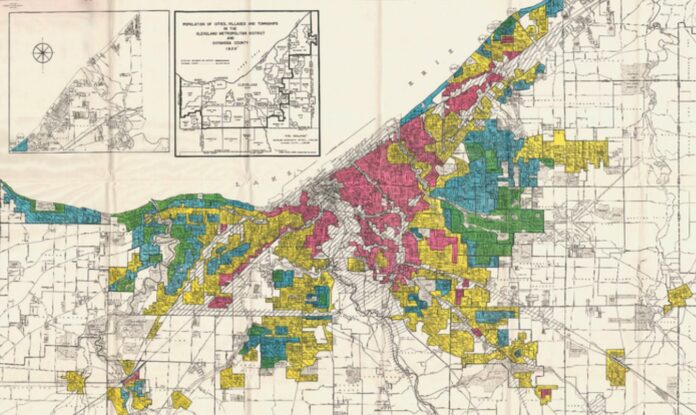Despite the fact that the federal Fair Housing Act outlawed the practice more than 50 years ago, its repercussions are being seen today.
An autopsy of the discriminatory lending practice was conducted by researchers at Case Western Reserve University School of Medicine 80 years after the federal Home Owners’ Loan Corporation (HOLC) redlined maps of the nation’s largest districts.
Researchers specifically looked at the elements that Ohio loan officers, appraisers, and real estate experts considered when making choices on mortgage applications from members of underrepresented groups in the 1930s. The term “redlining” comes from the maps that identified regions with high investment risk and were thus excluded from home credit programs.
Researchers also looked at the state’s regrettable and persistent effects of redlining.
Despite the fact that the federal Fair Housing Act outlawed the practice more than 50 years ago, its repercussions are being seen today.
According to co-author Adam Perzynski, the findings provided valuable insight into the factors that played a key role in the decision to redline certain neighborhoods.
He added that the study was conducted to determine if the decisions were racially discriminatory, and to eliminate other possible reasons.
He said that while there were other considerations, such as the condition of the homes and vacancy rates, “racial prejudice was the dominating element in choices to redline communities.”
He stated that although other elements, like housing condition and vacancy rates were considered, the primary factor in redlining decisions was racial discrimination.
The research found that neighborhoods in Ohio which had any Black families in the 1930s were 40 times more likely to be redlined.
“We know retrospectively that the reason neighborhoods were redlined is because African American families lived there, but we wanted to closely examine the tools that were used in the decision-making in the 1930s,” adds co-author Kristen Berg. “These are neighborhoods that still have a high minoritized populations with the highest rates of vacancy in their respective metropolitan areas.”
The role of Ohio in redlining
While previous studies have focused on particular U.S. cities utilizing a unified data collection (collected from neighborhoods, cities, and regions), the focus of this new study is on data collected from the rest of the state with the exception of Columbus and Cincinnati. These cities’ data were lost and never found again.
For 568 Ohio neighborhoods, the HOLC created area description forms and archived maps between 1934 and 1940. They obtained questionnaires and redlined maps from various places, including the National Archives.
Even though redlining was officially abolished by the Fair Housing Act in 1968, its impact persists, according to academics. Poverty and life expectancy are two long-term effects, which is why medical school researchers were interested in the study in the first place.
When considering redlining, Perzynski says, “we have to think about the consequences of racist policies.”
“Community gardens are a good thing and managing blood pressure is never a bad idea, but they don’t correct 100 years of discrimination and institutionalized racism.”
Researchers are optimistic that their results will have an impact on initiatives to invest in communities via social and health policies.
“We’ve created these neighborhoods,” Berg adds. “These are the consequences of deeply intentional policy decisions. There needs to be intentional work, then, to transform neighborhoods and invest in families whose generations have been harmed by redlining.”
Source: 10.1017/S1742058X22000236
Image Credit: Case Western Reserve University
